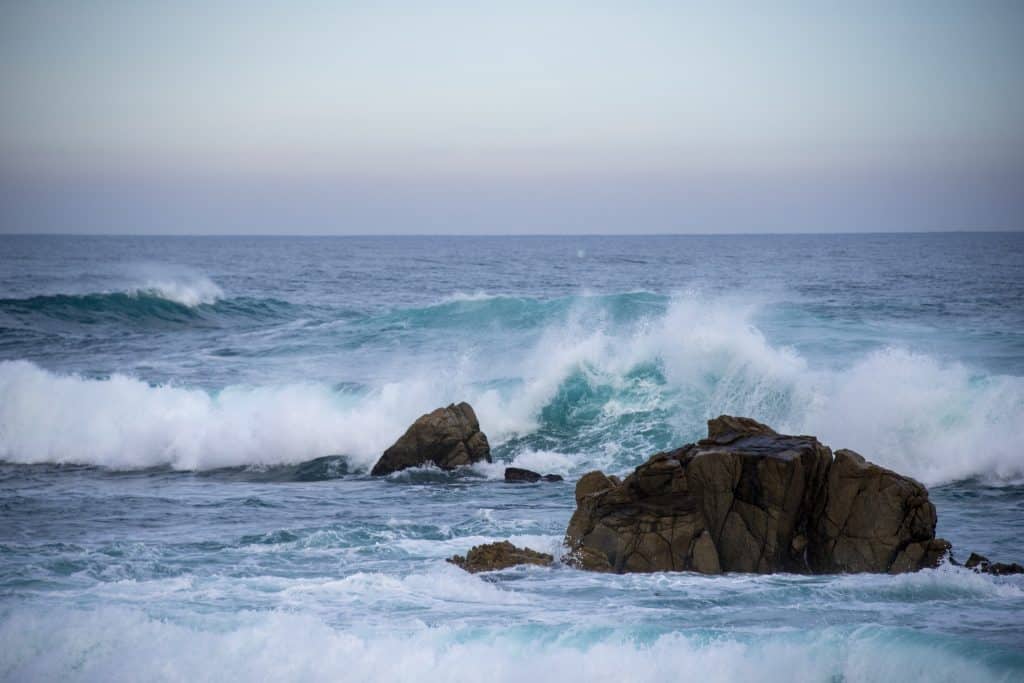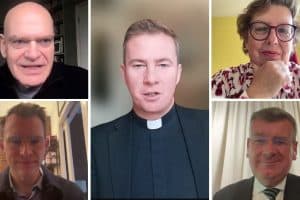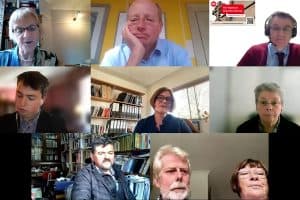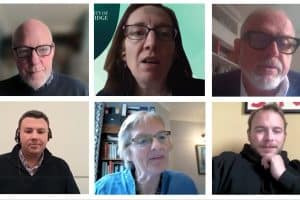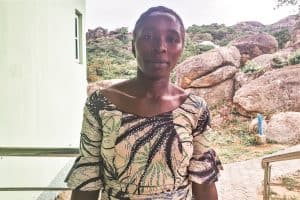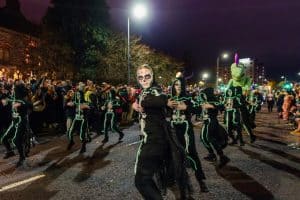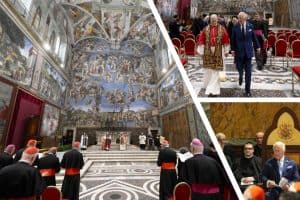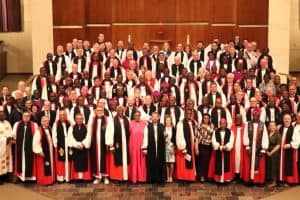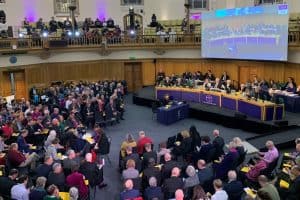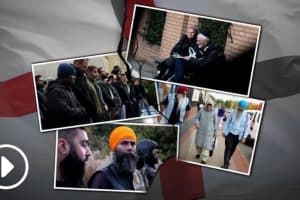By Ruth Peacock
The Sea of Faith Network, which started in response to the Anglican philosopher Don Cupitt’s television series of the same name, held its 37th conference in London, with a programme aiming to celebrate its educational projects, while providing an opportunity to consider how it defines itself for the future.
Don Cupitt died, aged 90, in January and the Sea of Faith Network has found itself reflecting on its past and redefining its place in a society which looks very different to the 1980s when it began.
He was a Cambridge don, Anglican clergyman and radical theologian, offering an understanding of God and Christianity in a 20th-century setting, reinterpreting language that made no sense in a scientific age, and moving away from a belief in God as an objective transcendent entity separate to human beings.
He thought “God” was a human construct, a “personification of our religious values” and religious beliefs were human creations, not delivered from a God out there. As his thinking developed, he was more inclined to speak of God as “life”.
He followed spiritual practices, understood meditation, aimed to live by Christian ethical standards and remained a clergyman until his death.
His ideas were explored in the six-part BBC TV series Sea of Faith, broadcast in 1984. But he was pilloried by the media and Christian establishment figures, who declared him to be an atheist. A vicar who came out in support lost his job, but was later reinstated. Groups of people who agreed with him were denied meeting spaces in churches.
And yet Canon Giles Fraser, a journalist and Anglican vicar, told a BBC programme that as a student in 1984, he wrote to Cupitt asking to visit him, and credits that meeting for leading him away from atheism and into the church.
Many Christians of all traditions found his ideas resonated with them and organised themselves into the Sea of Faith Network, which has provided literature, resources and meetings of like-minded people tussling with the same questions of faith.
The network holds annual conferences and in 2024, the membership voted to change the organisation’s tag line, from “exploring and promoting religion as a human creation” to “exploring and promoting religion and worldviews as human creations for this life”.
The change is contested and was passed by 12-10 votes. The opposing arguments are explored in the network’s quarterly magazine, Sofia.
Conference organiser Dave Francis, a former religious education teacher, suggested that the network needed to “clarify the, I believe, mistaken impression that all members of the network firmly reject all metaphysical beliefs”. It needs to broaden interest “across the range of faith and belief and across the ages”, bringing in questions of faith among people of all religious traditions.
David Boulton, former journalist and “nontheist Quaker”, disagrees. In his response, he said: “It is unclear what we would be promoting if we abandoned or weakened our core viewpoint that religion is a human creation rather than the product of divine inspiration and mystical revelation.”
A further challenge is the organisation’s contraction and limited age range. Mr Boulton said: “Over time, specifically promotional activity began to falter. Perhaps we just ran out of energy. ‘Explore and promote’ disappeared from our magazine’s masthead. Our lively network of regional groups began to shrink, as did our membership. And it all came to a head in 2024, when we both celebrated our origins in Don’s Sea of Faith TV series and turned our attention to the network’s present and future”.
One year later, and a glimpse of the future was offered at the 2025 conference held at Coram Fields in London. Lifelong network members were joined by RE teachers and academics who led sessions and took part in discussions on the latest developments in the way society understands religion.
A presentation on AI, Religion and Hope by Beth Singler, assistant professor in digital religion at the University of Zurich, drew attention to the way religion and artificial intelligence are “entangled”. She suggested AI offered analysis of religious beliefs using language it had been taught and then explained.
AI, she said, had borne new religious movements and acted as a catalyst for new forms of spirituality, and even a new deity, Leilan. It could spawn conspiracy theories and was feared for replacing humans and destroying traditional frameworks of truth. But it also inspired hope as developers searched for a utopian future.
Another consideration was around the way religious education has adapted to a changing society with multiple faiths living side by side, falling attendance at churches and a rise in non-religion.
A new approach to religious education, “Big Ideas for RE”, was explained by the Rev Michael Reiss, professor of science education and assistant director at University College London’s Institute of Education. He said the concept involved teachers identifying the big ideas they wanted pupils to remember 30 years from now. While this approach has been used in science education, he advocated applying it to religious education as well.
Professor Denise Cush is one of the team who have prepared materials based on the concept, for use in schools. She said the Big Ideas approach in RE includes how traditions change, diversify and continue, making sense of life experiences and exploring values.
Dave Francis added that the Sea of Faith Network had helped to fund the project, which had already been launched in several areas. The RE curriculum is set by standing advisory councils on religious education, academies and individual faith schools. Often, it is taught by people with no graduate knowledge of the subject. There is a campaign led by leading RE organisations to set up a national standard for RE to recognise its importance and value.
Mr Francis said: “One of our principle aims for Big Ideas was to design a curriculum for those who don’t identify with any religious tradition and to encourage them to think about their ideas. We use religious and non-religious belief systems as our content to illustrate the Big Ideas.”
The two sessions were drawn together by Professor Rupert Wegerif, from Cambridge University, whose work focuses on the value of dialogue and technology in learning. He suggested AI created a new form of dialogue and religious dialogue, as a way of connecting to the unknown. Meaning did not just come from other humans, he said, but from something broader than that — the cosmos — and AI was a way of connecting to that, something beyond the individual.
Where the Sea of Faith goes from here is still being discussed. But for Mr Francis, the future lies in promoting dialogue for “wiser” relationships and interactions. “The magic, the mystery, the creative, the inspirational, the emotional and the sheer genius of life remain,” he said.
“We, as members of a network of individuals pouring ourselves out into the world, are driven by dialogue, by curiosity, by a desire to make things better, more beautiful and more truthful, towards a spreading of creativity, value and love, across the many landscapes of life”.

